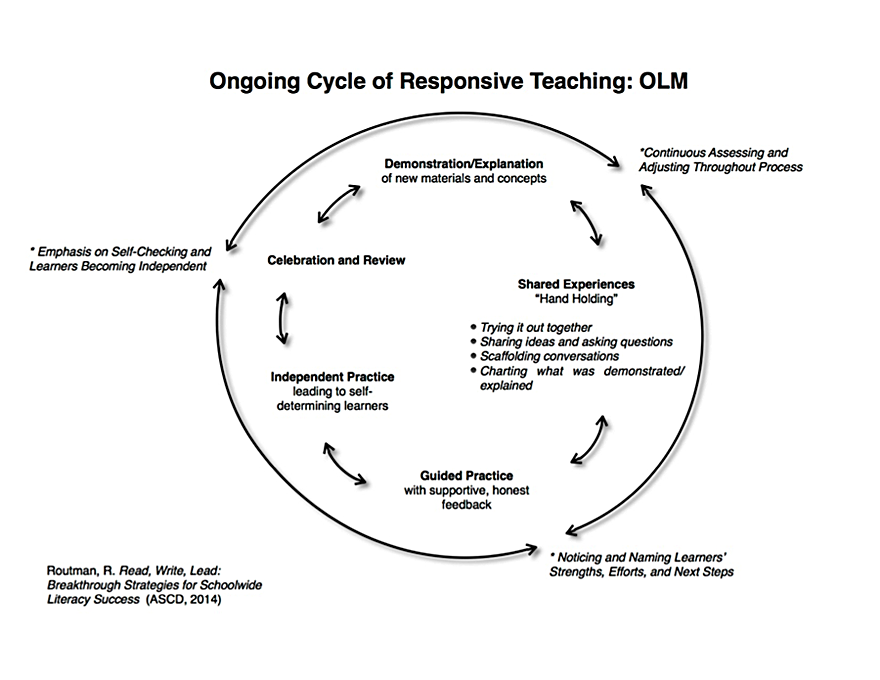How Should Keyboarding Be Taught in Elementary School?
When our elementary principal team learned that the new Common Core State Standards-aligned tests would be administered on computers, we had many questions and few answers.
Are there enough computing stations for all third-, fourth- and fifth-graders to take this test? Do our current software and hardware meet the requirements to administer the Partnership for Assessment of Readiness for College and Careers (PARCC)? How will we ensure that students are able to keyboard?
While our technology department was tasked with addressing the first two questions, our administrative team focused on the third.
Around a decade ago, all intermediate students in our district had keyboarding instruction taught by a certified business teacher. Classroom teachers would walk their students down to the computer lab. Then the keyboarding teacher taught this skill in isolation. After 30 minutes, the students went back to the regular classroom.
Modern Keyboarding
Keyboarding wasn’t applied to work that was relevant or meaningful. It became another prep for teachers (myself included, as I was a fifth-grade teacher). When budget cuts came, elementary keyboarding was one of the first programs to go.
With the introduction of computer-based standardized assessments, keyboarding has come to the forefront in education once again. This year, we tried a different approach so that this skill was not only taught, but also applied across all content areas.
These assessments are not the only call to action. For instance, the National Council of Teachers of English (NCTE) recommends that students “develop proficiency with the tools of technology.” NCTE and other respected educational organizations view digital skills such as keyboarding as essential for learners to communicate in the 21st century.
So, starting in the fall of 2013, our eight elementary schools were given six weeks each to schedule in keyboarding for our fifth-graders. We started small with one class to ensure a successful trial. This time, instead of just dropping the students off, classroom teachers were expected to observe the high school instructors who were teaching them the skill in action.
Google Turning the Tide
One thing these secondary teachers brought to the elementary level was a strong understanding of how Google Apps for Education could be used in the school setting. The keyboarding teacher visiting our school used Google Docs to have students practice their keystrokes. At the same time, she explained how their documents were automatically saved online as well as how they could be shared with collaborators and would allow other users to revise and edit them at the same time.
As the class progressed, our fifth-grade teachers started to co-teach with their high school colleagues. During instruction, both teacher-teacher and teacher-student conversations that raised interesting questions occurred. How could we use Google Docs to complete assignments? Wouldn’t these tools allow students to complete unfinished work at home? Making connections between the technology and the academics had begun.
Although this initial experience ended after six weeks, it was just the beginning for our students and teachers.
This process of modeling what we want learners to know and be able to do, and then gradually including them into instruction is referred to as the “gradual release of responsibility,” developed by P. David Pearson and Margaret C. Gallagher in 1983. In her upcoming release Read, Write, Lead: Breakthrough Strategies for Schoolwide Literacy Success (ASCD, 2014), educator and author Regie Routman expands on this framework with the Ongoing Cycle of Responsive Instruction.

This process applies to all teachers and to all learners, whether adult or child. Just as the high school teacher was releasing the reins of keyboarding instruction to the classroom teacher, so too was the classroom teacher handing off the responsibility of this skill to his or her students once they were on their own. We know learners are ready for more independence and less support through formative assessments. Our ultimate goal for our learners is to become self-regulating and independent. This clearly occurred through our elementary-secondary teaching partnership.
Case in point: This spring I was doing a walkthrough in one of the fifth-grade classrooms. The teacher was busy conferring with a reader while other students were working independently — or so I thought. Two boys were busily typing on the computers. Upon closer inspection, I saw that they were actually working on the same Google Doc together. They were composing a fictional story, complete with a title and chapters. I asked them where the comments on the side came from, assuming they were from each other.
“Oh, those are from kids in the other fifth-grade classroom,” I was told.
Based on our collective observations, the elementary administrative team has decided to expand our six weeks of keyboarding instruction to all students in third through fifth grades next school year.
The success of this co-teaching and co-learning experience was very convincing. More importantly, the impact of keyboarding instruction has extended beyond test preparation. Our students are seeing it as a way to communicate and collaborate with peers on work that is important.
That our original intention was to get them ready for a computer-based standardized test is unbeknown to them. Our school would like to keep it that way.








